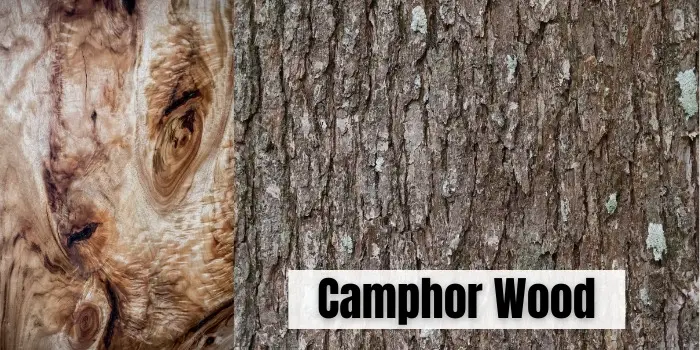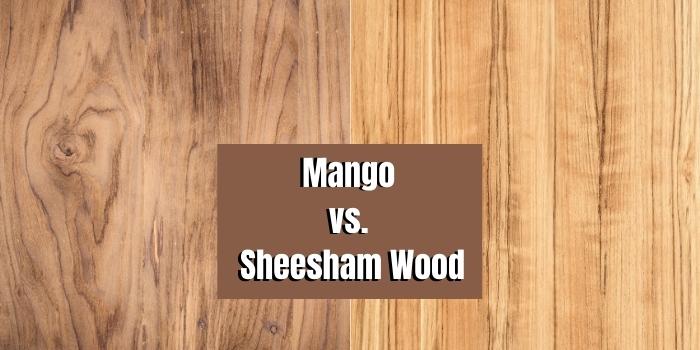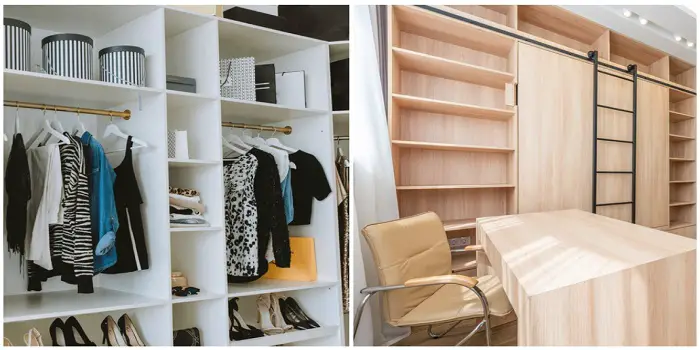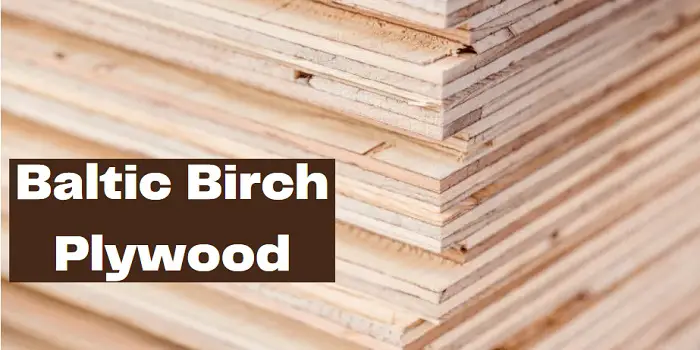
Of the many different types of wood available, camphor wood is a popular variety.
Camphor wood comes from the camphor tree, which mostly grows in Australia, Taiwan, Japan, and Indochina.
It is an evergreen tree that normally grows to about 70’ up to almost 100’ in height.
And is normally found in regions where the temperature does not fall below 40 degrees F.
Camphor Wood
| Scientific Name: | Cinnamomum camphora |
| Tree Size: | 65-100 ft (20-30 m) tall 2-4 ft (.6-1.2 m) trunk diameter |
| Janka Hardness: | 950 lbf (4,440 N) |
| Type: | Hardwood |
| Odor: | Smell like extracts of camphor |
| Specific Gravity (Basic, 12% MC): | .43, .52 |
| Common Uses: | For chests, cabinetry, and furniture |
Workability
Since the density of camphor wood is moderate in nature, that makes it easier to work with compared to many kinds of harder woods.
That makes shaping and cutting relatively simple.
The only complications may occur at locations where the grains are interlocked, but that is relatively rare for camphor wood.
Such areas may cause tear-out issues if you are not careful. Otherwise, camphor wood is quite workable and is easy to glue, along with being simple to finish.
Odor and Toxicity
The wood itself carries a distinctive odor that is strong enough that the extracts are often used in medicated chest rubs.
In fact, the odor is such that it may be the most popular aspect of the tree itself. When left untreated, the odor will remain for some time.
There have been reports of skin irritation and, in rare cases, respiratory issues associated with exposure to camphor wood, such as asthma-type symptoms.
Some people have reported headaches and even feelings of giddiness when exposed to wood.
On the upside, the odor is enough to repel insects which is why this wood is resistant to pests. It also prevents the tarnishing of silver if contact is maintained.
Color and Grain Patterns
The sapwood is often light yellow or grayish-white in color. While the heartwood can be dark brown or even golden in coloring.
Camphor is considered a lustrous wood with a medium to fine texture. It offers many attributes that make it a popular wood around the world.
The grain is normally straight, but it may sometimes be wavy or interlocked. It is mostly of medium texture with a beautiful, natural luster that really shines.
On the downside, there is a slightly greasy feel to camphor wood when it is untreated. But when stained or painted, that greasy feel is reduced considerably.
The end grain consists of either semi-ring or diffuse-porous, with the pores themselves being medium to large in size with a random pattern.
The spacing of the pores is not much different compared to other hardwoods. Plus, tyloses may occasionally be present.
Is Camphor Wood Expensive?
Because camphor wood is rarely exported in lumber form, it may seem at first like this may be an expensive wood.
And for those who want the lumber or turning blanks, it can be difficult to acquire unless you buy them from a retailer in the country where they are harvested.
However, this wood is exported as burl veneer, which means that it can be used for a number of different projects.
The prices are actually rather moderate when compared to other hardwoods that are imported.
In other words, it’s not the cheapest, but it is also not the most expensive, which makes it well-priced depending on its use.
What Do You Use Camphor Wood for?
This type of wood has several popular uses. First, it is a common veneer which makes it quite solid for projects that require veneer.
However, the most popular uses are cabinetry, chests, and furniture.
Because of its pest-resistant qualities, it is suitable for outdoor use if it has protection from the UV rays of the sun.
You can create many different objects from camphor wood. However, camphor wood is arguably most famous for its lovely burls.
What makes camphor wood less available for creating objects compared to some other imported hardwoods is its use for aromatic oils.
The extract of camphor wood is often found in medicinal along with culinary applications.
This is thanks to its unique aroma, which offers certain beneficial properties.
Add to this its ability to naturally drive away insects such as moths long with inhibiting silver from becoming tarnished, and the product use of camphor wood is quite evident.
Because of these qualities, you often find chests and trunks that store valuables made of camphor wood.

Hi, I am Mark Garner a professional carpenter, woodworker, and DIY painter. I live in the small city of Peoria, Arizona as a semi-retired woodworker. I have started this blog with a simple motive to help you with my wood experience in this sector. If you like to know more about what I love doing and how it all got started, you can check more about me here.




